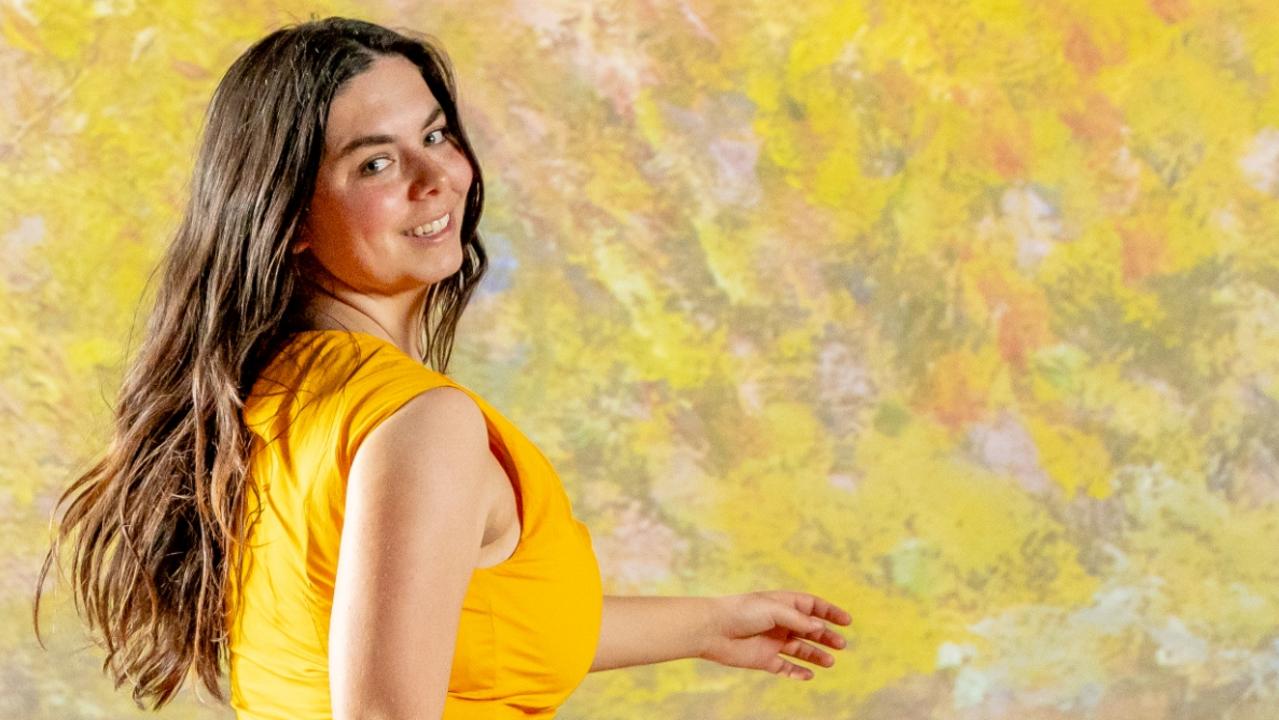10 quirky, jaw-dropping and head-turning art works to see at NGV Triennial
From jaw-droppers to head-scratchers, these are some of the most fun and fabulous art works to see at NGV’s blockbuster Triennial exhibition.
Arts
Don't miss out on the headlines from Arts. Followed categories will be added to My News.
Thousands of visitors have flocked to the NGV International reopening and its spectacular new exhibition, NGV Triennial.
NGV Triennial, which opened on Saturday, is a free exhibition of 86 projects by more than 100 artists, designers and collectives from more than 30 countries.
As eager crowds get their culture fix, and study the works, quirky stories and fun facts about the art are starting to surface.
NGV’s senior curator of design and architecture Ewan McEoin said: “As the Triennial sets out to reveal the interest of creative practices around the world, many unique and idiosyncratic stories have emerged.
“Some are funny and some slightly unusual, just like the year we have just had.”
Some of those stories include:
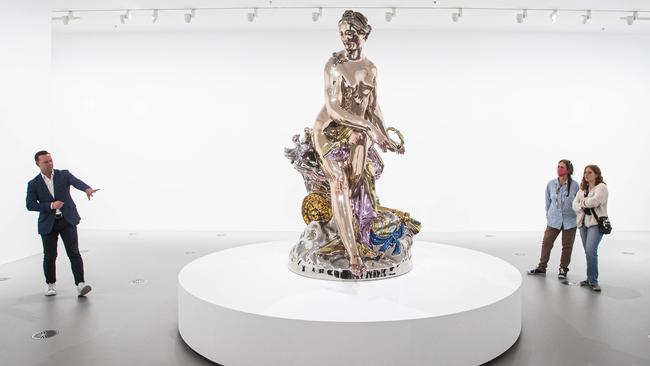
JEFF KOONS, VENUS
There’s a new diva in town. The shining goddess, which stands at 2.5 metres and made of mirror-finish stainless steel, is stored in a custom-built crate, fully sealed, when it’s not on display.
When NGV staff unpacked the statue, they did so in “live (video) conversation with a manufacturing team in Germany … to ensure the sculpture was uncrated safely and displayed perfectly in position”.
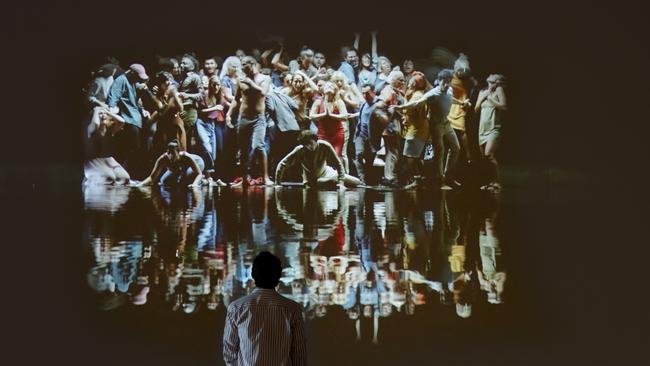
ANGELA TIATIA, NARCISSUS
The only filter in this vain ensemble is chlorinated, as a self-obsessed pack gather around the water’s edge to gaze at their reflections.
It’s a timely take on the Greco-Roman Narcissus myth, and part comment on the Insta mob. The setting, a darkly lit pond, is a trick of the lens, too.
Tiatia’s piece was shot at a suburban swimming pool.

DHAMBIT MUNUNGGURR, CAN WE HAVE A HAPPY LIFE
Yolngu artist Mununggurr uses a wheelchair and has limited mobility after a car accident in 2005.
It was around this time she discovered the colour blue, a dilemma given Indigenous art traditions use ochres and pigments drawn from the land.
Mununggurr was given special permission to paint with store-bought acrylic paint, which she finds easier to use.
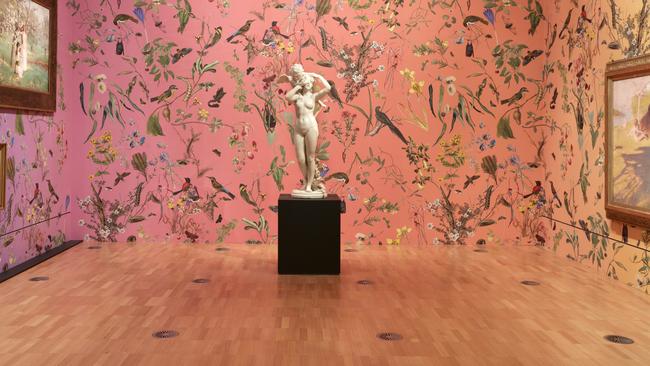
FALLEN FRUIT, NATURAL HISTORY
The sumptuous wallpaper in this installation, set against museum collections, will generate a glut of social media spam this summer, and beyond.
It’s enticing, enriched and engaging.
Interestingly, the local flora and fauna featured on the lush wall coverings are based on research trips and visits to Melbourne’s Royal Botanic Gardens, Collingwood Children’s Farm and Cranbourne Gardens.

BOTANICAL PAVILION, KENGO KUMA AND GEOFF NEES
Melbourne’s Royal Botanic Gardens makes another appearance in this sensorial walkway and marvel of traditional Japanese architecture.
Timber used in this piece are from Botanic Gardens trees that died during the Millennium Drought of 2000.
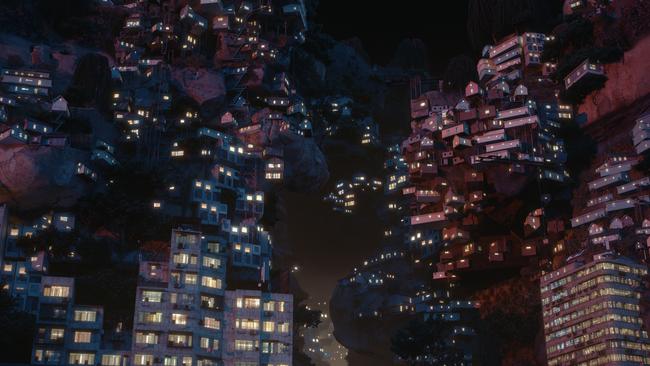
LIAM YOUNG, PLANET CITY
Dystopia much? A collaboration between Australian director Liam Young and US costume designer Ane Crabtree, Planet City depicts a world where humankind lives in one megacity, allowing the rest of the world to become a wildlife conservation area.
Crabtree is the costume designer for dystopian dramas Westworld and The Handmaid’s Tale, yet Planet City is hopeful place.

ALICE POTTS, DBPPE
Dance Biodegradable Personal Protective Equipment, or face masks, for a post-COVID dance party.
Each bioplastic — organic, biodegradable — mask is made from food waste, and dyed using flowers collected by Potts in London parks and gardens. Rave ready, and recyclable.
ADRIAN PIPER, THE HUMMING ROOM
The only critic in this reality singing show is the security guard you must convince to take your rightful place on the stage.
And by stage, I mean an empty room with echo. This work explores the notion of authority while giving potential hummers total freedom of expression.

CECELIE BENDIXEN, CLOUD FORMATIONS
Four seasons in one room. Bendixen’s skyscape of illuminated, voluminous textile clouds float above the NGV’s 19th and 20th century international collection.
The clouds were handmade by teams forming each textile with needle and thread over several months.
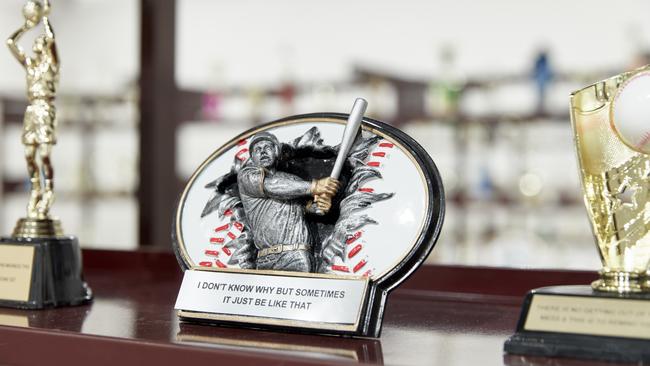
DIAMOND STINGILY, IN THE MIDDLE BUT IN THE CORNER OF 176TH PLACE
Winning isn’t everything, and the 723 trophies in this work, with inscriptions like “We didn’t have this sport when I was growing up” and “I did the best I could with what I had,” prove the point.
A homage to second-place (and lower) glory, the inscriptions are snippets of conversations Stingily had with her grandmother and her brother, Byron, a former NFL player.
This is the second instalment of the NGV Triennial, which is held every three years.
The inaugural exhibition, held in 2017, set records as the NGV’s most attended exhibition to date, with 1.23 million visitors.




